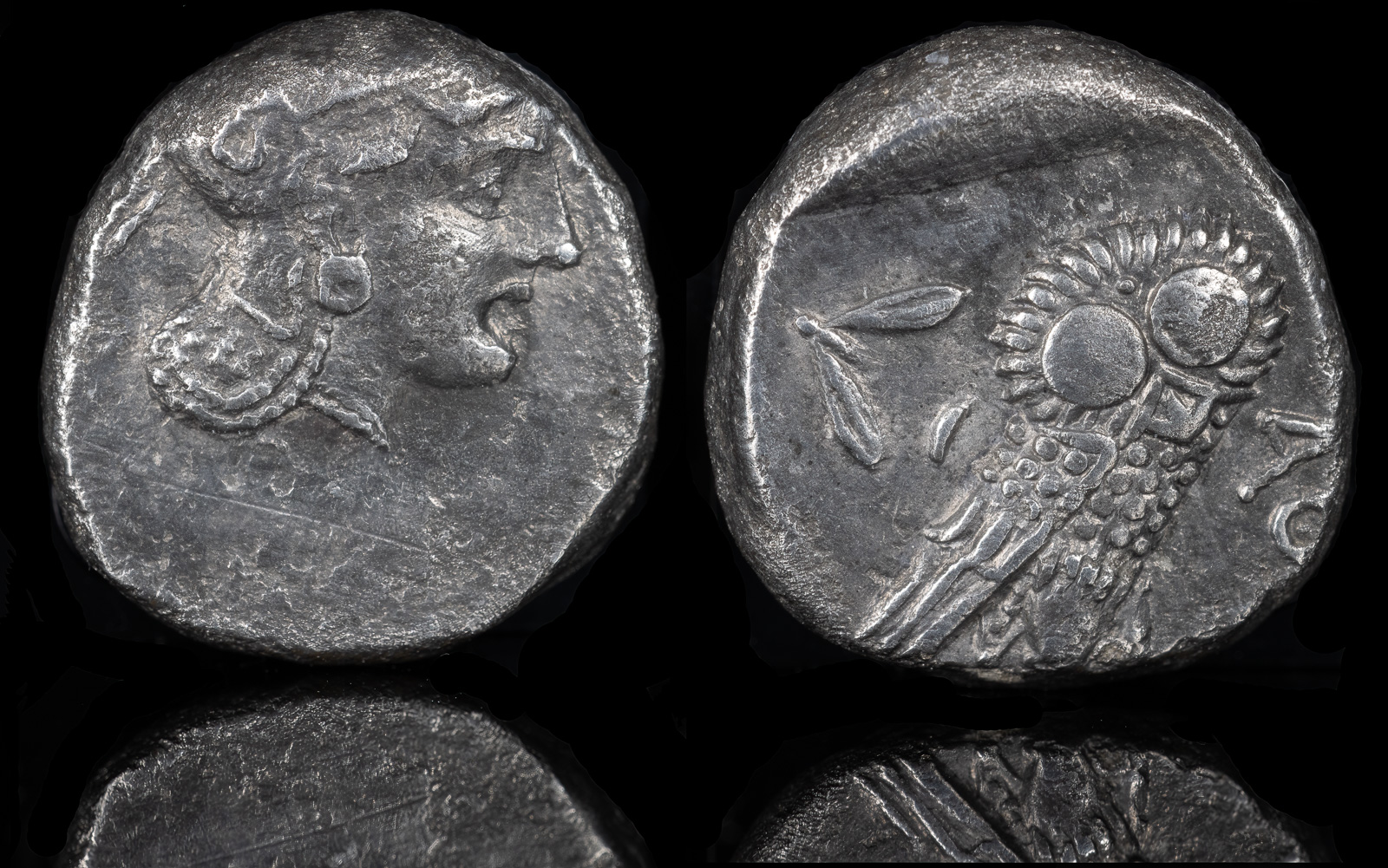
PHILISTIA (PALESTINE), Gaza
Circa 353-333 BCE
AR Drachm 14mm, 3.94 g, 12h
Imitating Athens pi-style coinage. Helmeted head of Athena right, with profile eye and pi-style palmette, Aramaic M horizonally on cheek (only traces visible) / Owl standing right, head facing; olive sprig and crescent to left.
Gitler & Tal V.25D; HGC 10, 542
Gaza is actually one of the oldest settlements on Earth. Someone has lived there for at least 5000 years and records stretch back to 1500 years that mention this city that’s long been on the boundary between Asia and Africa.
Pretty much every one of its neighbors has occupied it at one point or another and the city was already ancient when Alexander the Great ordered it to surrender. It’s king, Batis, wasn’t fond of that idea, so Alexander embarked on a particularly blood siege, at the end of which Batis was dragged by a chariot and every inhabitant was either killed or sold into slavery. Alexander then repopulated it with bedouins.
The city also took front and center with the Battle of Gaza, which pitted Ptolemy I Soter against Demetrios I Poliorketes. Ptolemy won that battle, though Demetrios later achieved a huge victory at Salamis. Still, Ptolemy’s victory prevented Demetrios and Antigonos from overrunning Egypt.
Later, Gaza was nearly annihilated by Alexander Jannaeus, after which it came under Roman control and was rebuilt by them.
Gaza coins from the Persian occupation up to its destruction by Alexander the Great are identifiable from the Aramaic ‘m’ on designs that mimic the famous Athenian owl coinage. Today, we don’t know exactly what ‘m’ stood for, but it may be for ‘Marna’, who was their chief deity.
Foundation of Tell es-Sakan, which later became known as Gaza.
Local Canaanite population resettles Tell as-Sakan, later known as Gaza.
Total collapse of civilization at Gaza.
A new city is built at Tell as-Sakan, later known as Gaza.
Tell as-Sakan, later known as Gaza, is destroyed as Hyksos of Egypt is routed. The area comes under Egyptian rule.
Gaza is occupied by Philistines and is no longer under Egyptian control.
The Israelites under King David occupy Gaza.
The United Monarchy of the Israelites splits and Gaza becomes part of the Kingdom of Judah.
Canaan is conquered by Tiglath-Pileser III and Gaza comes under Assyrian rule.
The Babylonian king Nebuchadnezzar II is defeated by Egyptians near Gaza.
Nebuchadnezzar II again attempts to take Egypt and fails, but does conquer Gaza.
The Persian king Cambyses I is unsuccessful in his attempt to take Gaza.
Alexander the Great besieges Gaza for five months before finally taking it. He is badly wounded in the head during the encounter. He resettles the city with Bedouins.
June 30
Partition of Babylon. Abydos and Adramytteion come under control of Leonnatos. Egypt with Alexandria and Gaza are under Ptolemy. Baktria comes under Seleukos I Nikator. Asandros obtains Caria. Laomedon receives Koele-Syria.
Antigonos‘s son, Demetrios I suffers a major defeat at the Battle of Gaza against Ptolemy I and Seleukos I. Peithon is killed.
Demetrios Poliorketes defeated at the Battle of Gaza by Ptolemy I Soter and Seleukos I Nikator.
Alexander Jannaios besieges Gaza for a year, then kills all the inhabitants and destroys it.
Gaza incorporated into the Roman Empire and rebuilt by Aulus Gabinius.
Gaza is burned by Jews during the rebellion against Rome.